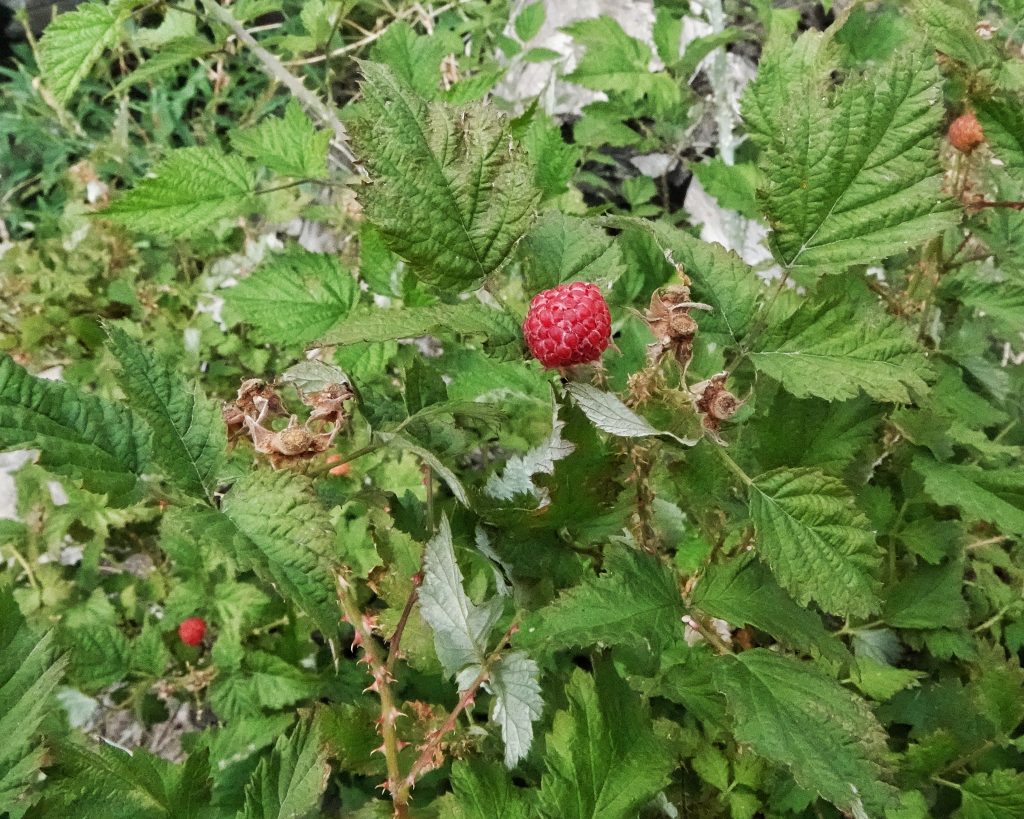
I’m not really much of a forager, and I can’t say I’ve ever tried the fruit of Rubus leucodermis (known as blackcaps, black raspberry and whitebark raspberry), though I’m told that it is delicious, and apparently the indigenous humans and wildlife of the region think so also. What I do remember from the first time it was pointed out to me is that it has a ton of nasty looking green thorns with broad bases and curving tips, and that the green of the thorns was very noticeable even to a color blind guy like me because they were set amidst the bluish white pruinosity of the stems. So that when I stumbled into a patch of this the other day on Mt. Adams, unsuccessfully trying to get close to an unknown species of horntail wasp, I knew immediately what was making me bleed, and decided to document this plant instead of the uncooperative wasp.
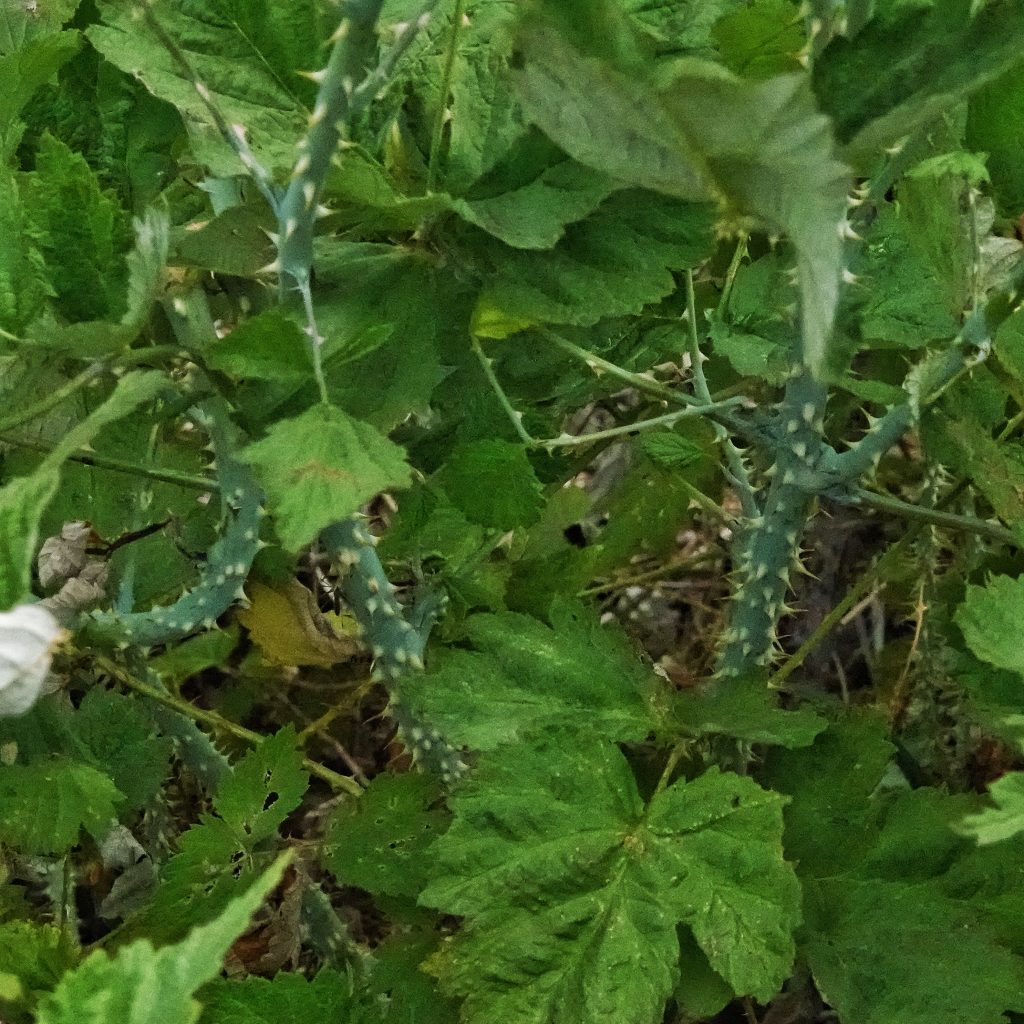
“While the crown is perennial, the canes are biennial, growing vegetatively one year, flowering and fruiting the second, and then dying. As with other dark raspberries, the tips of the first-year canes (primocanes) often grow downward to the soil in the fall, and take root and form tip layers which become new plants.” https://en.wikipedia.org/wiki/Rubus_leucodermis
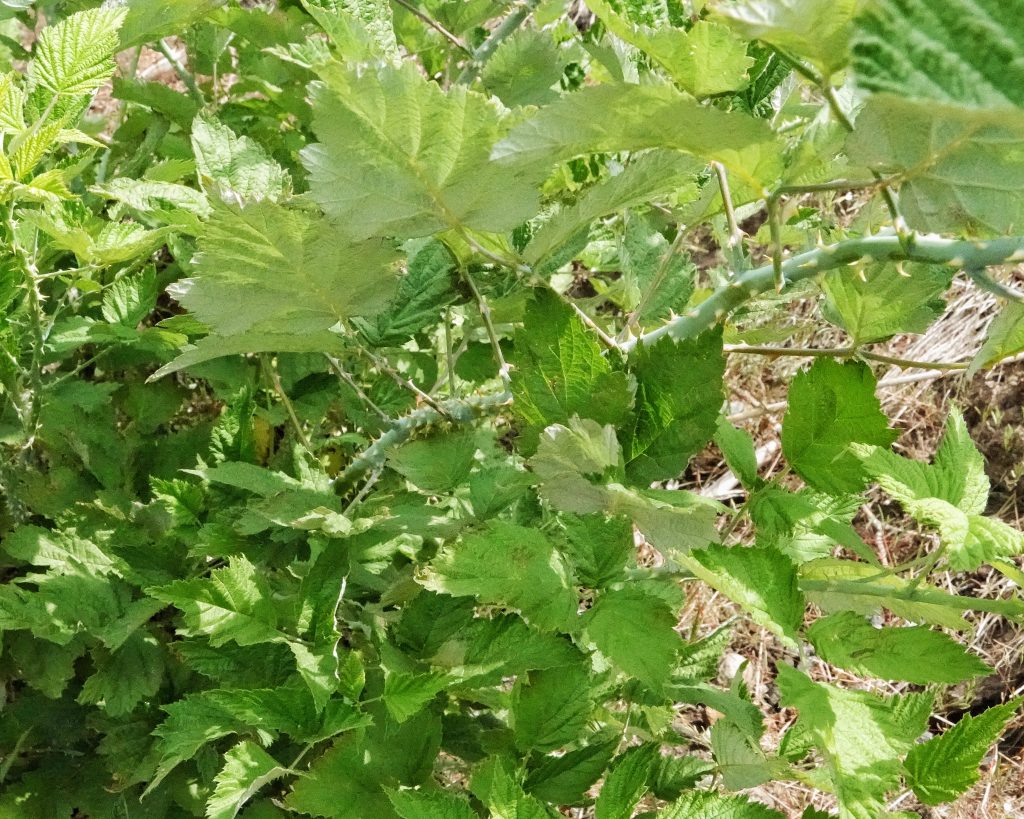
Ethnobotany– “Berries formerly dried in cakes and used for food…Berries eaten fresh…Berries cooked into jam…Leaves and sprouts used for food…Infusion of leaves or root taken for diarrhea…Poultice of powdered stems applied to wounds and cuts.” For more information, though most of what I’ve omitted has to do with eating the berries, see the 71 entries for Rubus leucodermis on BRIT – Native American Ethnobotany Database; “Thompson- Juice used as a stain. Coast Salish combined it with fruits of salal, black twinberry, and wild raspberry for a purple stain.” Rubus leucodermis – Mount Pisgah Arboretum
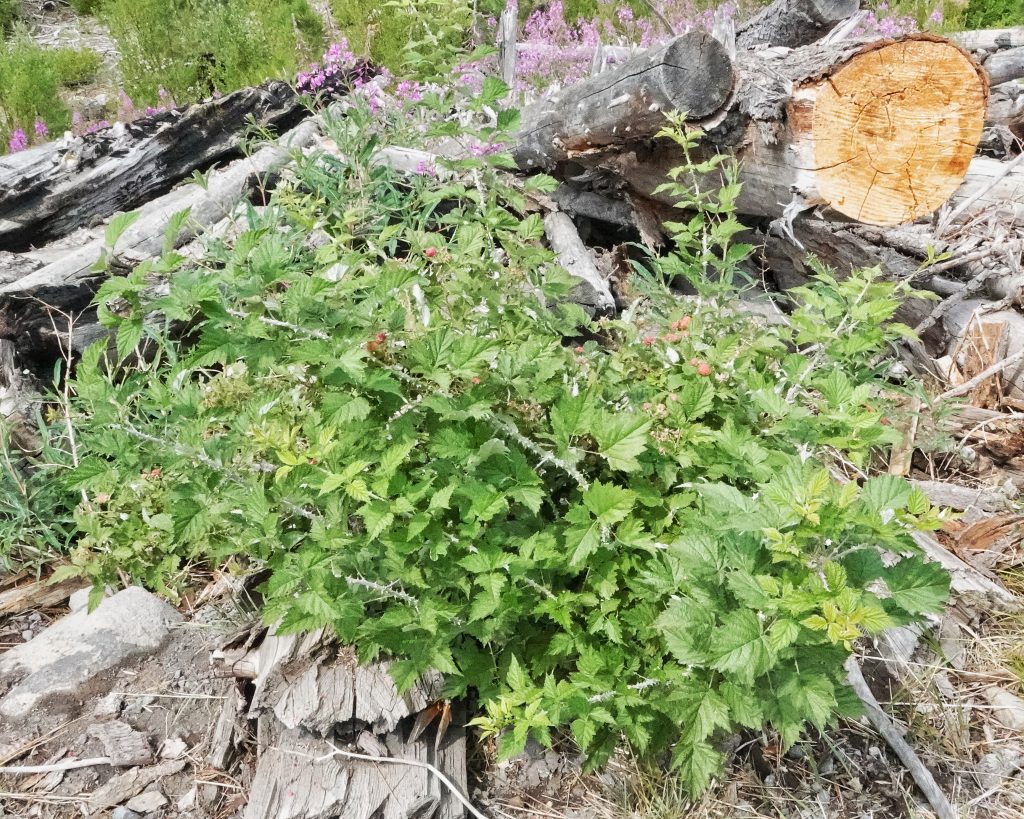
Description– “Arching to erect bramble. Stems coated with whitish powder, many recurved thorns with wide, usually curved base. Leaf petiole 1/2–2 in., blade palmately divided into 3–5 oval leaflets shallowly lobed and toothed, underside white-hairy. Flowers few, small, white to pink, in clusters near tops of branches, 5 reflexed sepals longer than petals. Raspberries hairy, about 1/3 in. across, red turning purple to black.” Rubus leucodermis | Blackcap Raspberry | Wildflowers of the Pacific Northwest
Similar species– Rubus idaeus has straight thorns without a wide base; R. nigerrimus has mostly hairless leaves, and is only found along the Snake River and in se Washington.
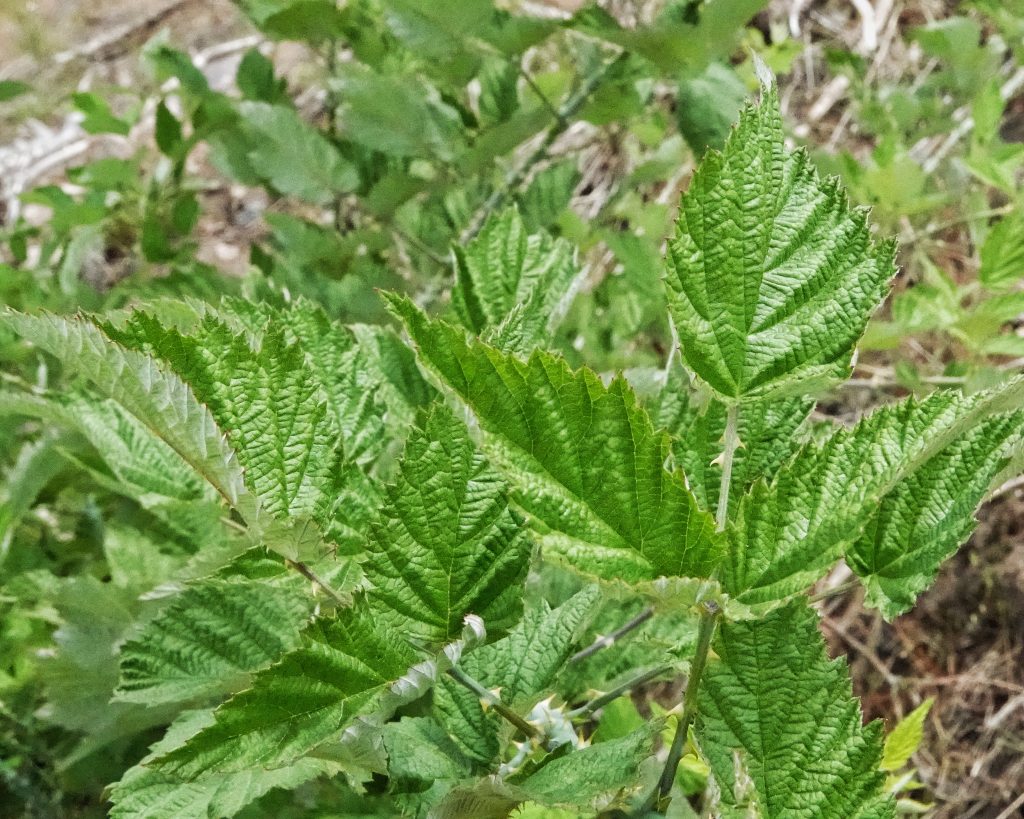
Habitat– “Disturbed sites, clear cuts, or burn sites. Thickets and open forests in low to mid-elevations.” Rubus leucodermis – Mount Pisgah Arboretum
Range– Western North America; in the PNW it is found region wide in appropriate habitat, but mostly absent in shrub steppe and in ne Washington.
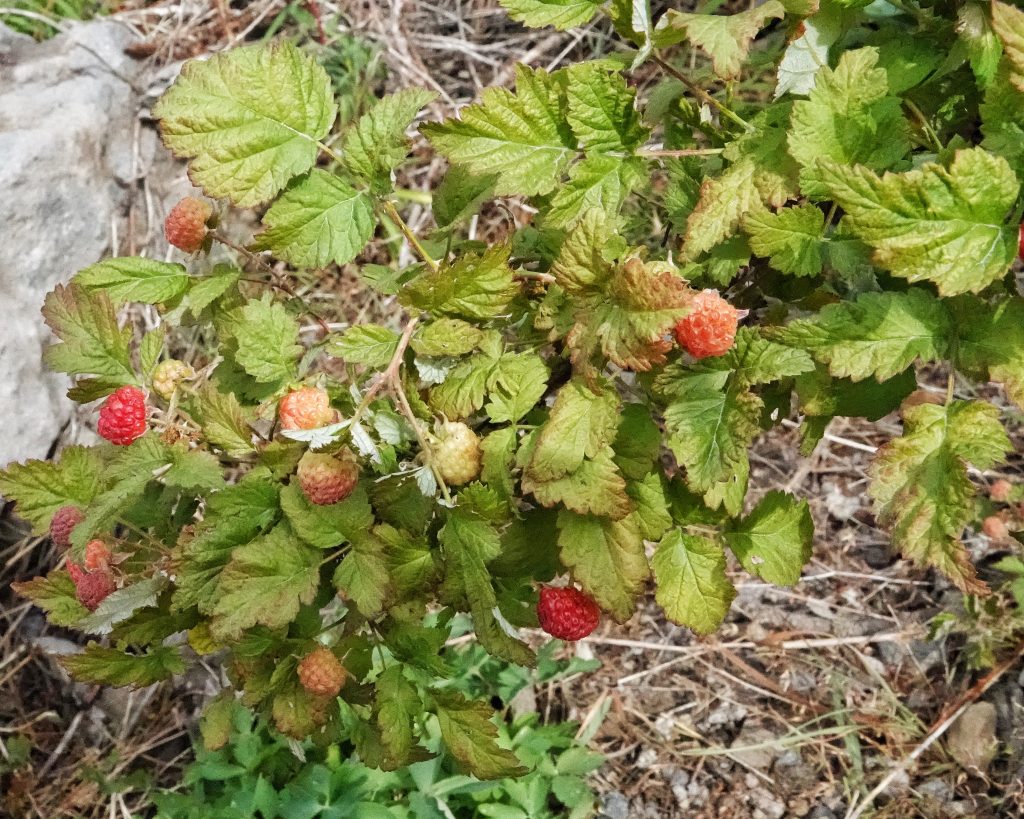
Eaten by– Larvae of the moths Geina tenuidactyla, Pennisetia marginata, Ancylis comptana, and some members of the Feltia jaculifera complex, use this as a larval host; larvae of the leaf mining fly Agromyza vockerothi use this plant, and there are probably other dipterids that do so also; there are over 2 dozen leaf beetles known to utilize Rubus sp., as well as around 20 true bugs, but I can find nothing specific to this species; “The brambles rank at the very top of summer foods for wildlife, especially birds: grouse, pigeons, quail, grosbeaks, jays, robins, thrushes, towhees, waxwings, sparrows, to name just a few. The berries are also popular with raccoons, opossums, skunks, foxes, squirrels, chipmunks and other rodents. The leaves and stems are eaten extensively by deer and rabbits. Bear, beaver and marmots eat fruit, bark and twigs. Flowers are usually pollinated by insects. These usually prickly plants make impenetrable thickets where small animals find secure cover.” Blackcap Raspberry, Rubus leucodermis | Native Plants PNW
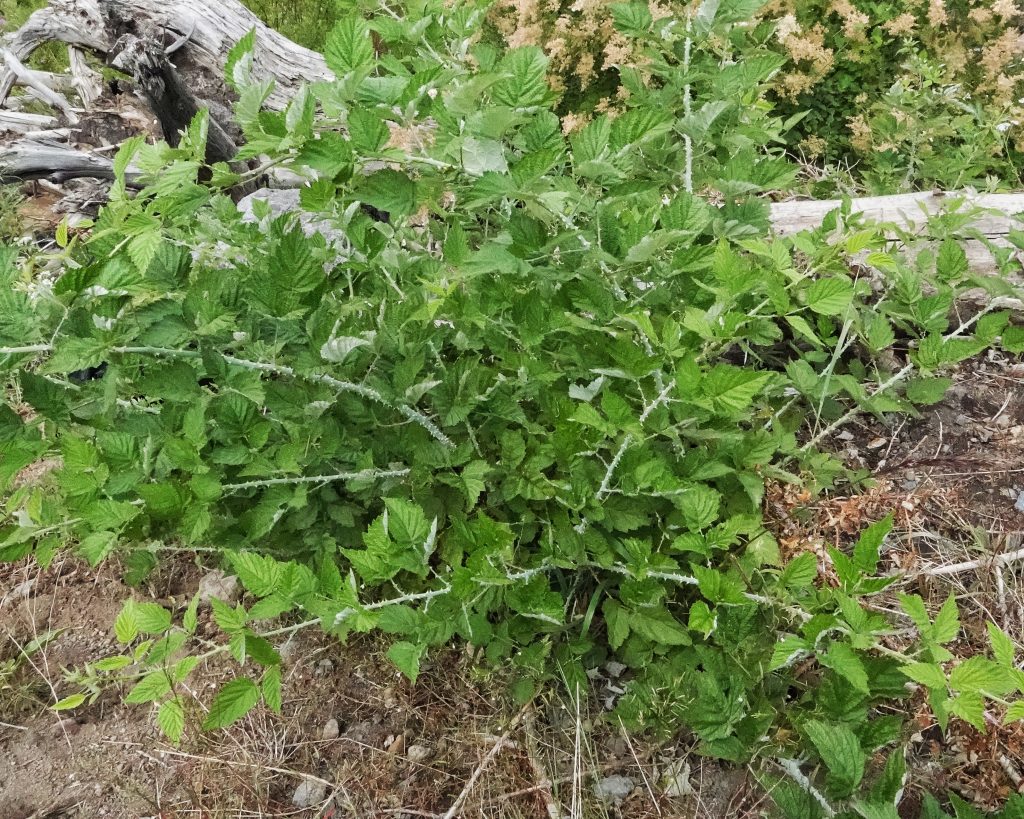
Reproductive timing– Flowers bloom from May through June, and the fruit ripens in July- August.
Etymology of names– Rubus is the Latin word for blackberry/bramble. The specific epithet leucodermis is from the Greek words for ‘white skin’, and refers to the waxy, whitish pruinosity of the canes. The Cowlitz tribe called this ca’xacat, the Green River tribe used tcilkōbats, and the Puyallup/Nisqually called it tcoko’ba.

Rubus leucodermis | Blackcap Raspberry | Wildflowers of the Pacific Northwest
Rubus leucodermis – Burke Herbarium Image Collection
BRIT – Native American Ethnobotany Database
Blackcap Raspberry, Rubus leucodermis | Native Plants PNW
Rubus leucodermis – Mount Pisgah Arboretum
https://en.wikipedia.org/wiki/Rubus_leucodermis
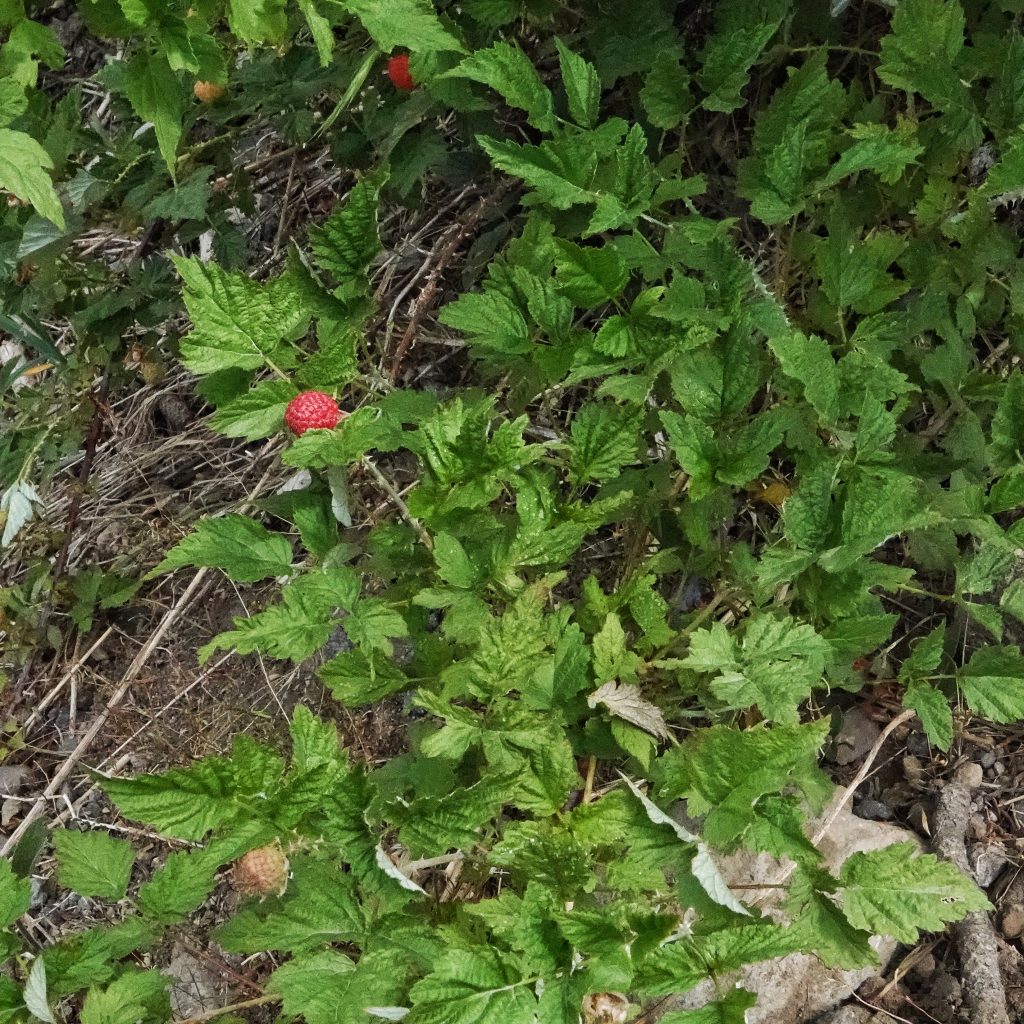
I wouldn’t want to ‘run’ into this berry! thanks for info on it
It is certainly well armed, Norma!